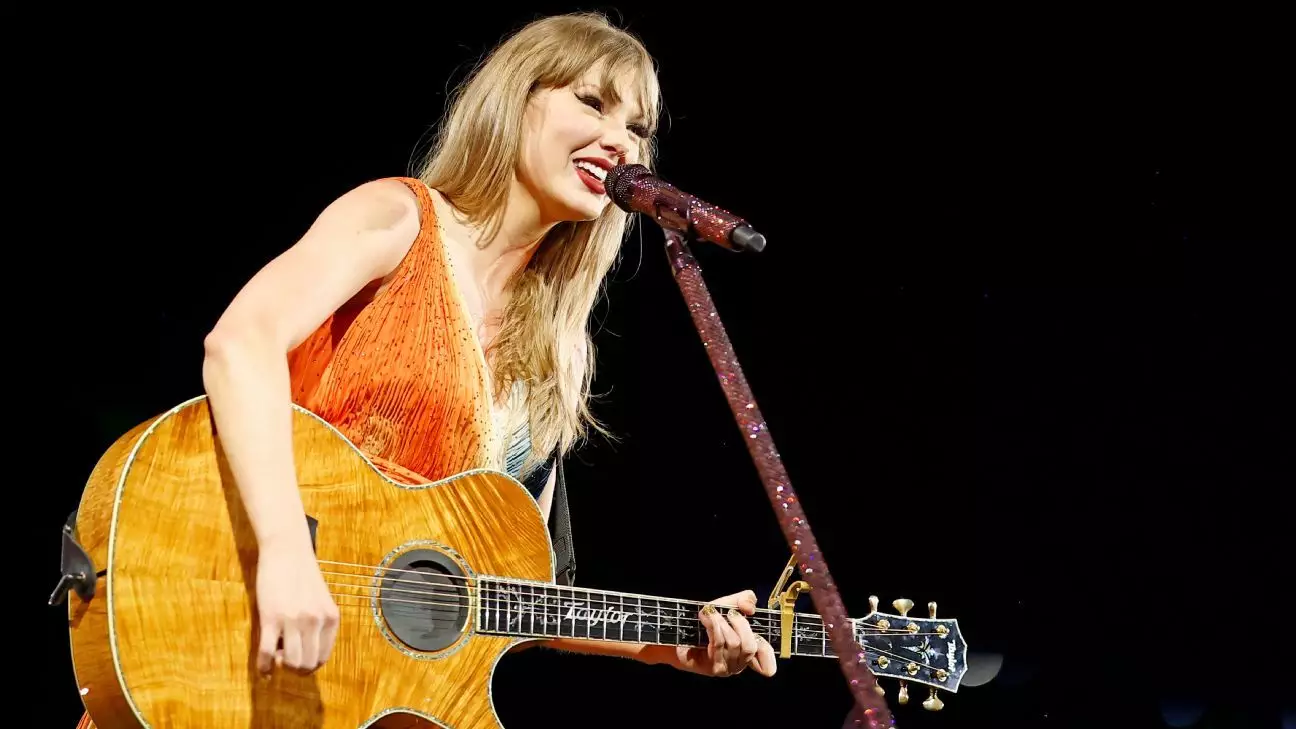In an era where boundaries between entertainment domains constantly blur, Taylor Swift’s latest album announcement exemplifies a masterclass in cross-cultural influence. Her new record, titled “The Life of a Showgirl,” does more than just add another milestone to her illustrious discography—it ignites a ripple effect across the world of sports, particularly within the NHL community. This isn’t a typical album reveal; it’s an intentional convergence of music, sports, and fandom, designed to create a mass cultural moment. What makes Swift’s move extraordinary isn’t just her musical talent but her ability to leverage her star power to energize diverse audiences simultaneously.
The strategic timing of her appearance on the “New Heights” podcast—a platform hosted by her boyfriend, Travis Kelce—and the subsequent social media frenzy exemplify how a pop icon can become a cultural touchstone beyond her craft. By embedding herself into the fabric of NHL fans’ conversations, Swift elevates her brand to a communal rallying point, fueling excitement and speculation. This approach isn’t accidental; it’s a deliberate, savvy maneuver to deepen her cultural footprint while simultaneously keeping her audience emotionally engaged with her artistry.
NHL Teams as Cultural Co-Conspirators: Crafting a Shared Narrative
What’s genuinely fascinating about this phenomenon is how NHL teams, traditionally focused on hockey excellence, have embraced this pop culture moment with surprising enthusiasm. Through creative social media posts and thematic nods, teams are transforming their branding into mini-celebrations of Swift and Kelce’s relationship, blurring the lines between sport and spectacle. For example, Calgary’s homage with Jarome Iginla’s image in vibrant orange glitter—a color palette reminiscent of Swift’s album branding—exemplifies how teams are capitalizing on the hype to keep fans engaged.
Other franchises have gone a step further by weaving intertextual details into their promotions—nearly treating Swift’s marketing as a shared narrative universe. The Carolina Hurricanes, with their cheeky email referencing a hypothetical collaboration, exemplify how teams are engaging fans’ curiosity with playful intrigue. Meanwhile, the Florida Panthers’ identification of Swift’s Cartier pendant and the hidden “T.S.” in their images inject a layer of detective-like fun for fans eager to decode every visual detail, turning a mundane social media post into an interactive puzzle.
This dynamic showcases a broader shift: sports teams are no longer solely focused on wins and losses; they are becoming active participants in pop culture storytelling. They understand that aligning with a global megastar like Swift can exponentially boost fan engagement, monetize brand loyalty, and craft a shared narrative that extends beyond game days.
The Power of Symbolism: How Colors and Icons Drive Fan Loyalty
Color schemes, symbols, and visual motifs have become strategic tools in this cultural synergy. The use of orange glitter across multiple teams is not coincidental—it’s a deliberate nod to the album’s aesthetic, creating visual resonance that fans immediately recognize and rally around. The Nashville Predators’ nod to Swift’s past collaborations, with images of her in a sweater, exemplifies how nostalgia is harnessed to forge deeper emotional connections.
Furthermore, the inclusion of real players like William Nylander and Shane Pinto underscores the intersection of individual athlete identities with the collective celebration. Highlighting a specific player’s number or history ties their personal brand into Swift’s release, creating a layered narrative where every element—from albums to jerseys—becomes part of a larger cultural fabric.
The attention to detail, down to the smallest color or symbol, illustrates how modern fandom is evolving into a form of collective storytelling. Fans are not just passively consuming music or hockey; they’re actively decoding, engaging, and amplifying these cross-references, transforming their interaction into a participatory experience.
The Cultural Implication: A New Era of Fan-Centric Innovation
What does this all mean for the future of pop culture and sports? It signals a pivotal shift: fandom is no longer confined within domain-specific boundaries. Instead, it is becoming a fluid, interconnected landscape where music artists and sports teams co-create cultural phenomena. For Swift, this strategic melding of her album with NHL imagery is a testament to her ability to stay relevant in an ever-evolving entertainment ecosystem.
This convergence redefines what it means to be a fan in the digital age. It encourages a participatory culture where fans aren’t just spectators but active contributors to a larger narrative puzzle. Whether decoding hidden symbols or celebrating team-themed album covers, they become part of a collective movement—one that merges emotional loyalty to their favorite artist and their favorite teams into a unified experience.
By seamlessly integrating her new music into the fabric of hockey culture, Swift demonstrates that modern celebrity influence extends far beyond traditional boundaries. It’s a reminder that entertainment today is rooted in shared storytelling, emotional investment, and the creative reinvention of cultural symbols. If this pattern persists, we can expect even more boundary-breaking collaborations where music, sports, and pop culture continuously intertwine, enriching the landscape of modern fandom.


Leave a Reply